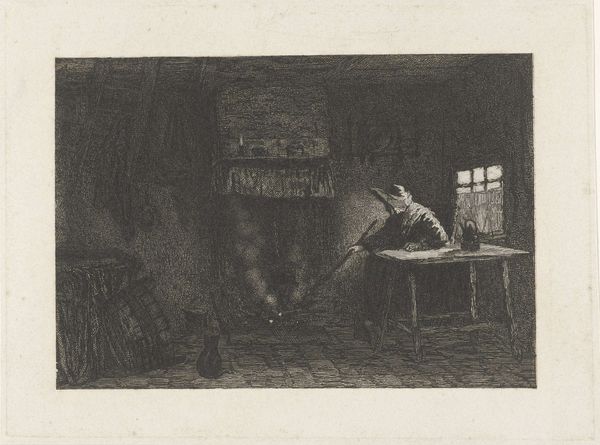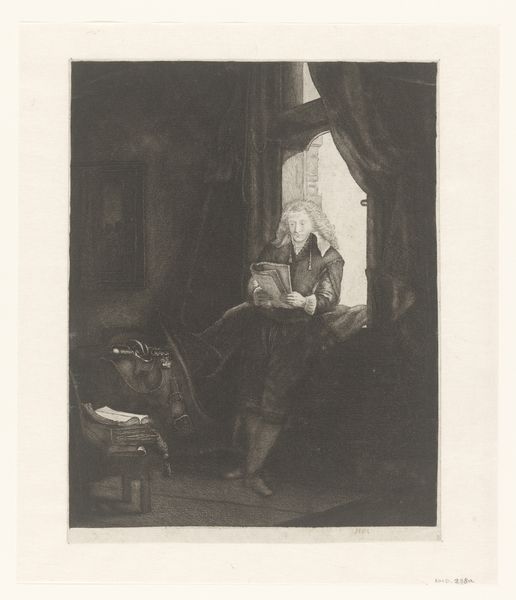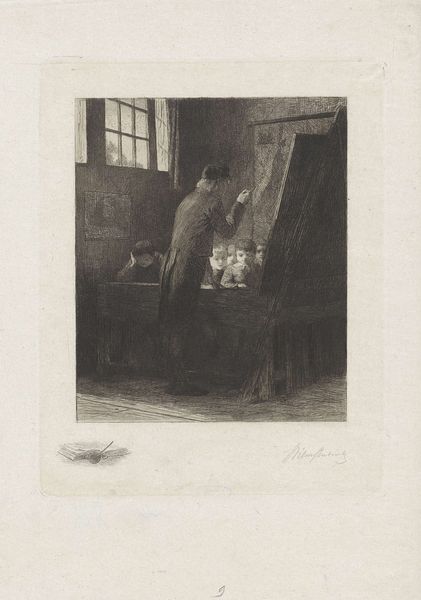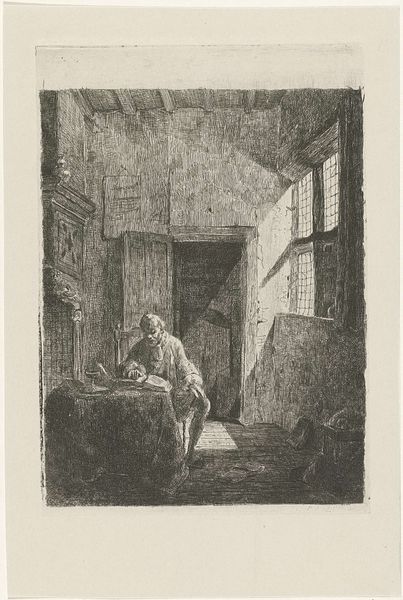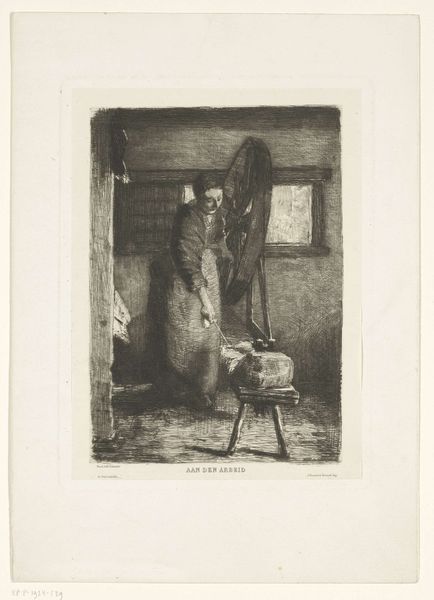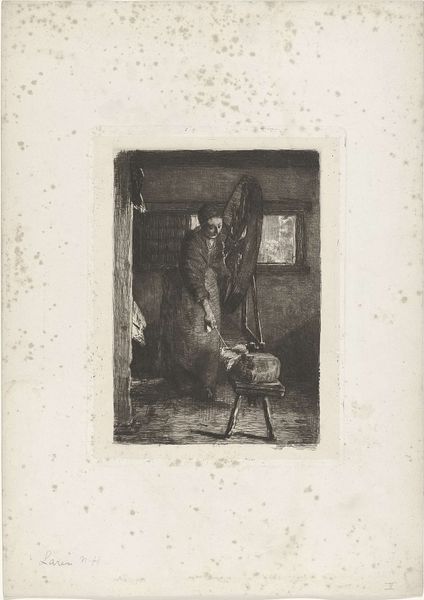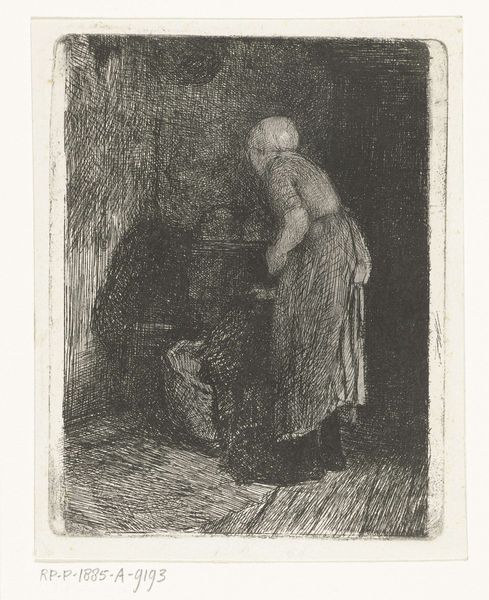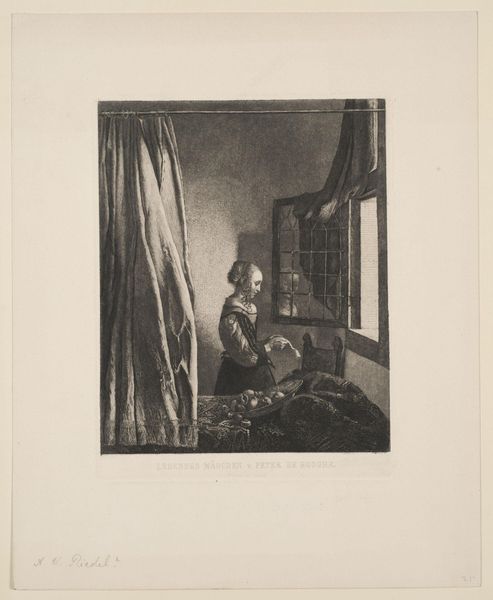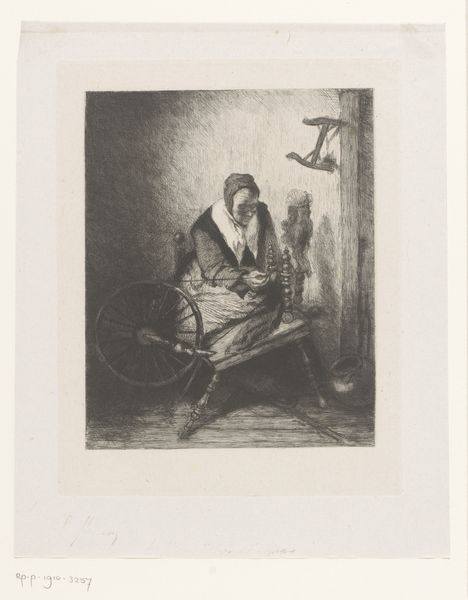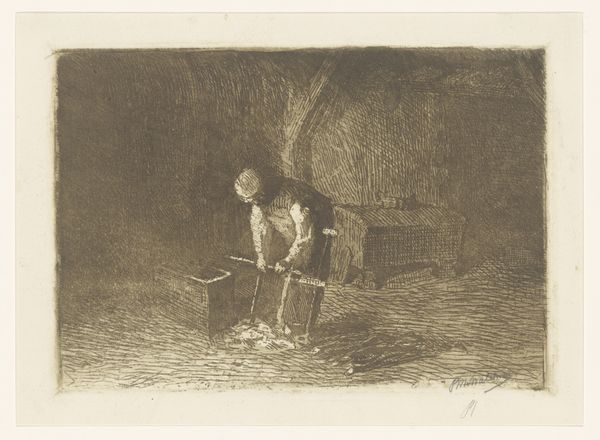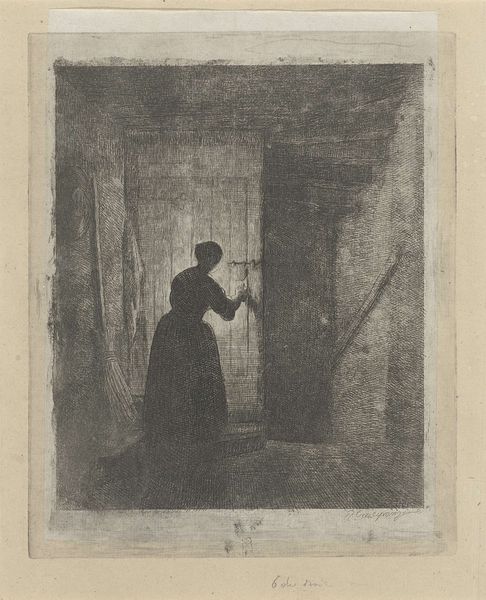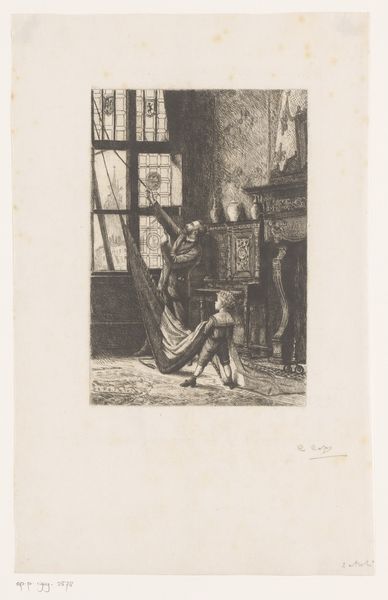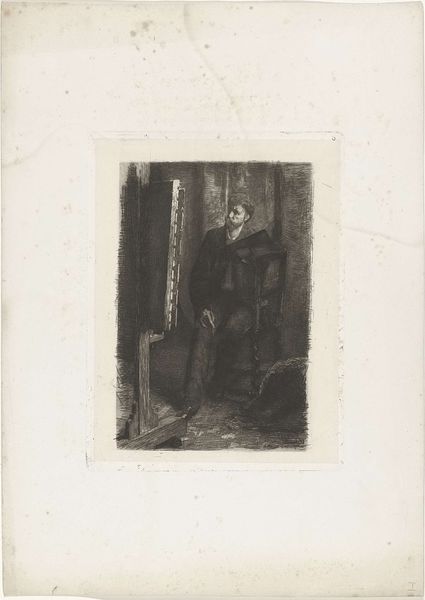
print, photography, gelatin-silver-print
# print
#
landscape
#
charcoal drawing
#
photography
#
gelatin-silver-print
#
genre-painting
#
realism
Dimensions: height 166 mm, width 116 mm, height 341 mm, width 249 mm
Copyright: Rijks Museum: Open Domain
Curator: This evocative piece, created around 1905-1906, is entitled "Vrouw aan een spinnewiel in een donkere ruimte" – Woman at a Spinning Wheel in a Dark Room. It's a gelatin silver print. What strikes you first about it? Editor: Immediately, the chiaroscuro grabs me. The way the light from that window catches the spinning wheel and the woman, contrasting with the deep shadows. It creates a sense of quiet, almost melancholic labor. Curator: Absolutely. This image exists within a larger socio-historical context. Genre paintings like this often romanticized rural life, sometimes glossing over the harsh realities of the work involved. Editor: True, and as a print, we have to consider the economics. Photography democratized image production, allowing for wider distribution of this kind of subject matter, right? Were these images consumed primarily by urban populations, further idealizing country life and manual labor? Curator: Very likely. The medium itself—a gelatin silver print—speaks to accessibility and reproducibility at the time. Think about the industrial processes necessary to create these photographic materials. The raw materials, the chemical processes... all hinting at the wider web of production that supported this artistic practice. Editor: It also prompts me to consider who had the leisure time and resources to create and consume such images. Was it middle-class urbanites? Or was it also circulated amongst working-class communities to build identity and shared experience? What can the materiality and consumption of such genre images teach us about class distinctions in that historical moment? Curator: Those are excellent points to explore. The image, then, becomes more than just a depiction of a woman spinning; it's an artifact deeply embedded within the social fabric of its time. Editor: It truly is. Looking closer, the tactile quality of the print, the specific gray scale achieved through the silver gelatin process. This forces us to remember how photographic materials themselves influence our experience of the image. Curator: I agree completely. It gives this work so much texture and deeper meaning. Editor: Well, I definitely see this gelatin silver print and this “woman at the spinning wheel” in a very different light now, seeing it in context of not just genre-painting conventions, but within a conversation around industrial processes, labor, and economics. Curator: Indeed. Looking closely at materiality helps reveal some social dimensions of image-making.
Comments
No comments
Be the first to comment and join the conversation on the ultimate creative platform.
